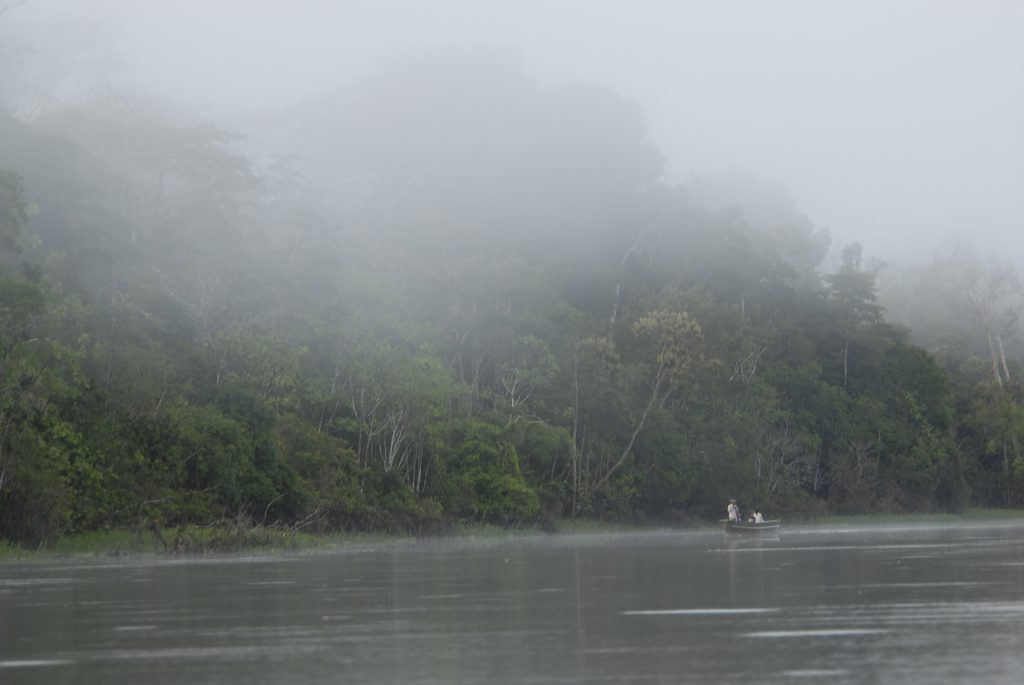Deep within the emerald heart of the Peruvian Amazon, the land of ancient lore and rich biodiversity, there exists a river of death and destruction, an enigma that confounds scientists and fuels local legends. Known as the Boiling River, or Shanay-timpishka in the indigenous language, it surges with lethal fervor through the verdant jungle, taking the lives of any living creature unfortunate enough to stumble into its simmering depths. Local narratives speak of it as a stream with a voracious appetite, running relentlessly to the center of the Earth, obliterating all in its relentless flow.
The origin point of this enigmatic river is marked by an imposing boulder, eerily resembling the head of a colossal serpent. Woven into the tapestry of local mythology is the tale of the mighty Yacumama, the ‘Mother of the Waters,’ a mythical serpent of colossal proportions whose spirit is believed to birth and control the Boiling River. This powerful entity purportedly releases a torrent of scalding water that floods the river’s course, creating an aquatic anomaly that both fascinates and terrifies. Thus, the Boiling River of Peru emerges as a phenomenon that seamlessly marries geological curiosity with cultural mystique, a testament to the enduring power of nature and mythology.

Ruzo’s pursuit of the boiling river
For many, like the Peruvian geoscientist Andrés Ruzo, the tales of the Boiling River were woven fabrications of imaginative folklore, a blend of indigenous mythology and audacious fantasy. But as he delved deeper into his research, during his postgraduate studies at Southern Methodist University in Texas, a curious detail pricked his scientific intrigue. As he meticulously created a geothermal map of his home country, a peculiar anomaly emerged. One of the largest geothermal features in the world, a simmering hotbed of thermal activity, lay nestled within the lush expanse of the Amazon, precisely where the mythical Boiling River was rumored to exist.
Intrigued and propelled by the potential discovery of a lifetime, Ruzo resolved to explore this uncanny coincidence. Accompanied by his aunt, an arduous journey beckoned them into the heart of the Peruvian rainforest. This expedition, lasting over four arduous hours, incorporated a hike flanked by a thriving biodiverse canvas, a canoe ride dancing on the ripples of the Amazon, and yet another hike through the labyrinthine jungles, their canopy resounding with the symphony of the wilderness.
The journey led him to the heartland of two shamanic communities, with most of his research centered around the Mayantuyacu. The denizens of this community revered the Boiling River as a spiritual nexus, a sacred site where only the most esteemed shamans dared to tread. In order to conduct his scientific explorations, Ruzo had to seek the blessings of the local shaman, in an expedition symbolizing a fascinating convergence of empirical science and indigenous spirituality.
Unveiling the river’s deadly heat
When Andrés Ruzo first encountered the blistering reality of Shanay-timpishka, he was utterly astounded. This Boiling River, shrouded in mystical legends, exhibited temperatures ranging between a sizzling 120ºF and an almost unimaginable 200ºF (48.9ºC and 93.3ºC). The devastating thermal wrath of the river claimed the lives of unsuspecting small animals, their lifeless bodies borne away by the seething current. Simply grazing the heated mud lining the riverbanks was an immediate deterrent against any barefoot ventures. Indeed, the water held such a dire potential for injury that a mere second’s immersion would result in severe third-degree burns.
Geothermally heated rivers, while exceptional, are not unknown to science. They are often found in close proximity to volcanoes or magmatic systems that supply the necessary heat. However, the Boiling River of Peru is an intriguing enigma. Its location is approximately 400 miles (643.74 km) distant from the nearest volcano, and no established magmatic systems are known to exist beneath the vast expanse of the Amazon basin. Ruzo and his team propose that the river’s extreme temperature could be attributed to a geothermal feature fed by faults. They speculate that the water might be heated by hot springs during its downhill journey, leading to cooler temperatures at the river’s mouth. A more ominous hypothesis suggests the possibility of a catastrophic oil field accident, given the river’s unsettling proximity—a mere 1.24 miles (2 km)—to the region’s oldest active oil field.
The Boiling River Project and the fight against deforestation
Ruzo’s fascinating discovery motivated him to establish the Boiling River Project, which seeks to facilitate ongoing research while ensuring the river’s protection. It underscores the understanding that the Boiling River holds immense cultural, biological, and geological significance. Since Ruzo’s initial exploration, the arduous journey to the river has been drastically shortened to just three hours, due primarily to the regrettable deforestation engulfing Peru. Now accessible entirely by road, the Boiling River symbolizes natural marvels endangered by human encroachment.


